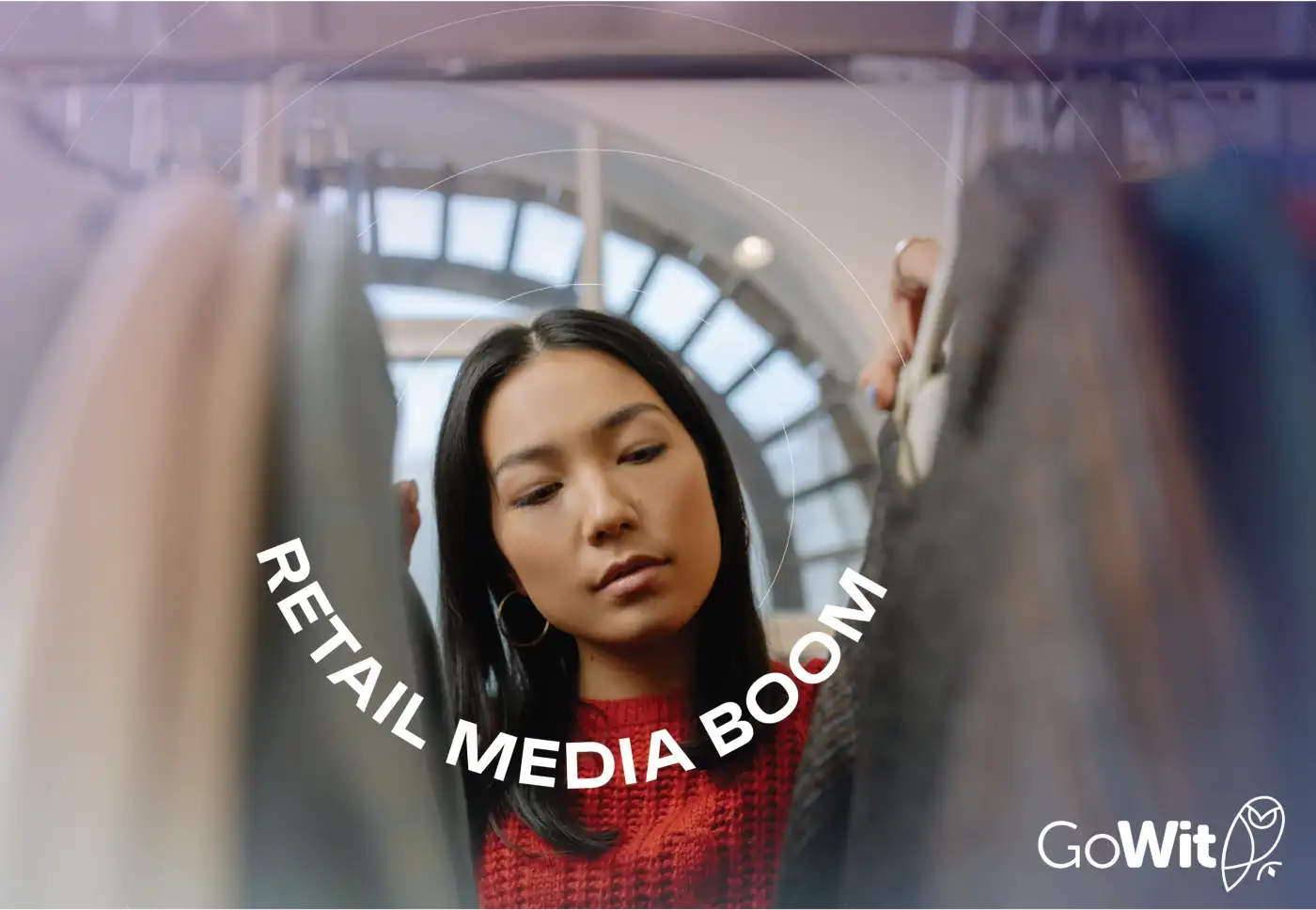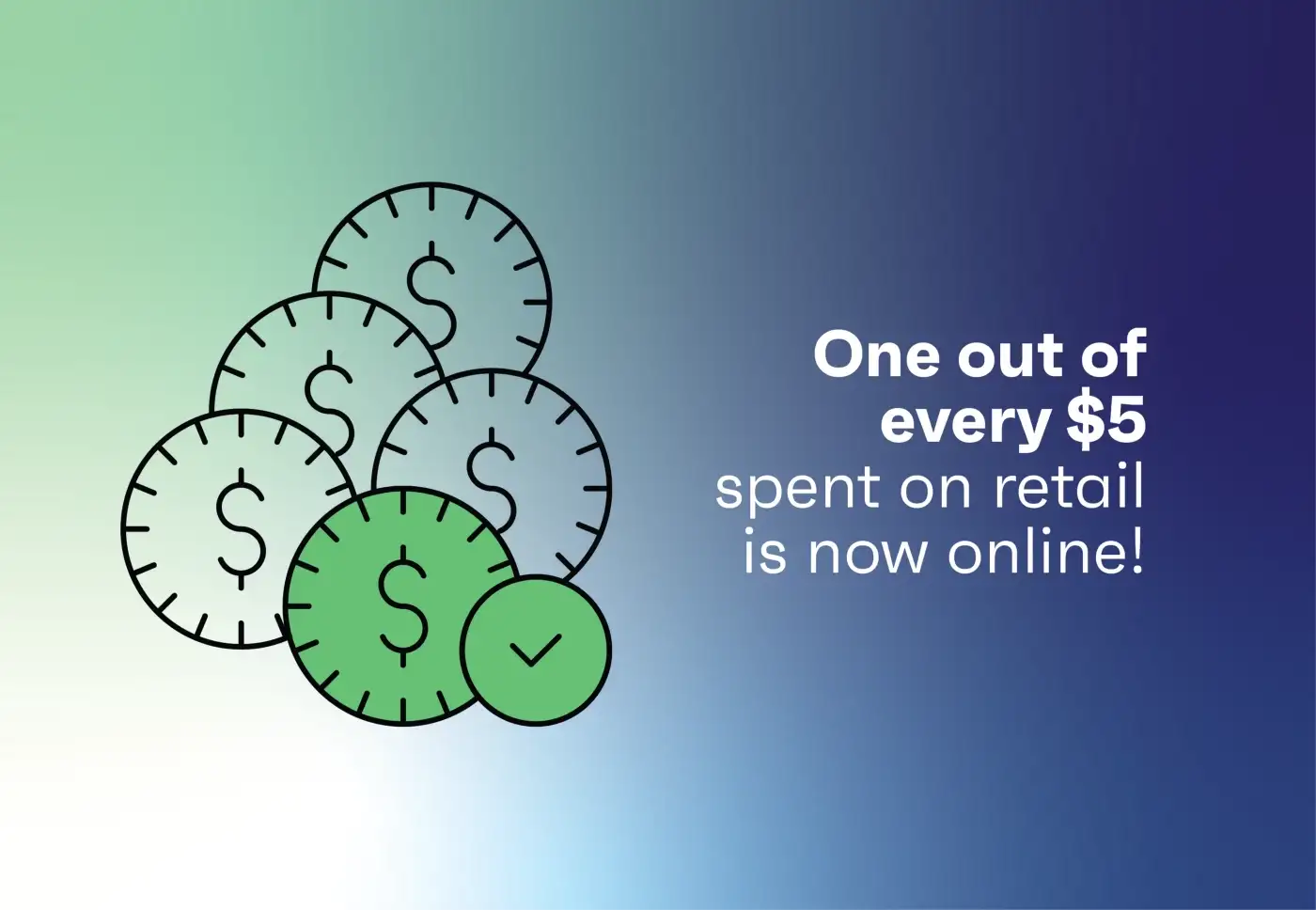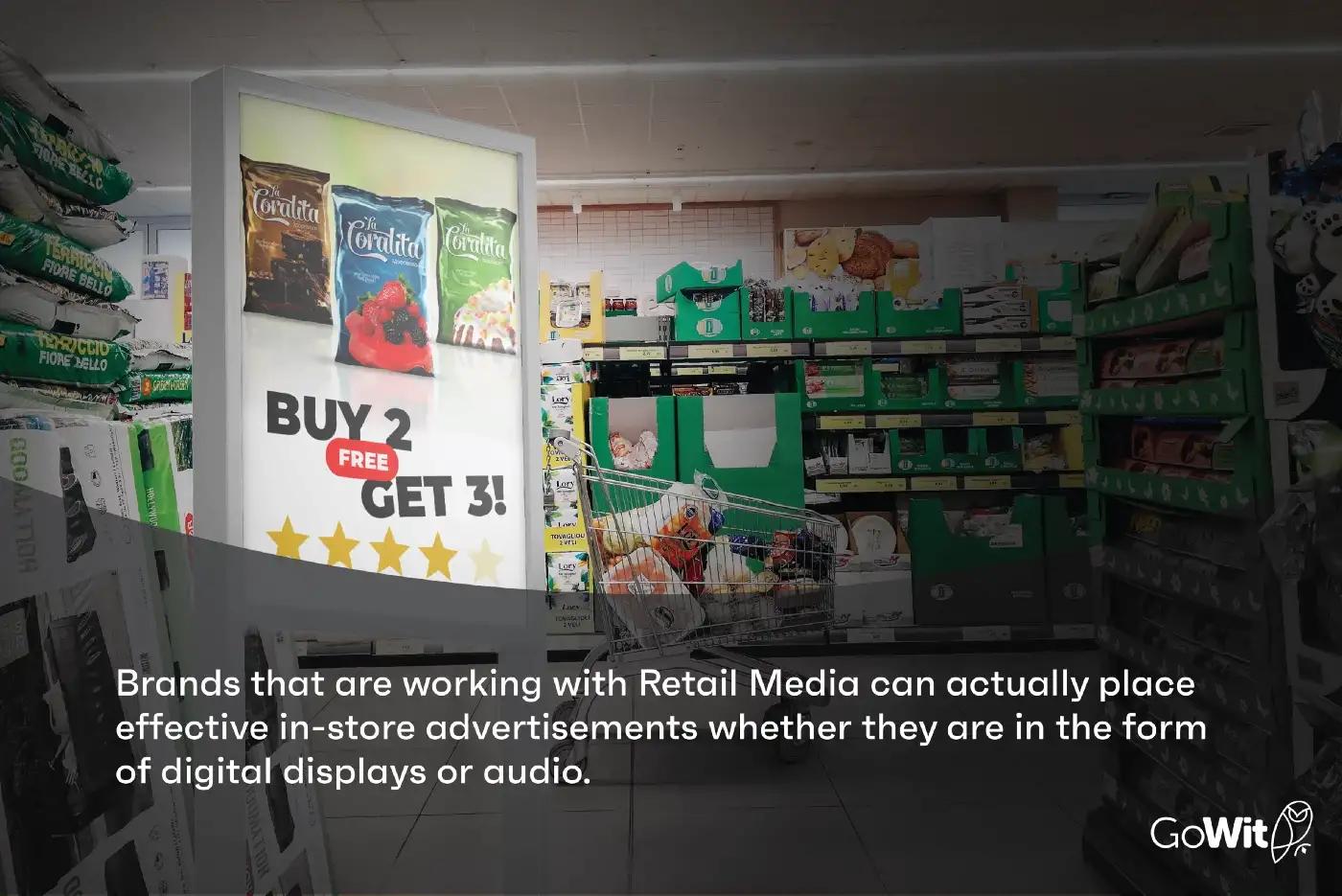Retail Media Boom: Why is it important for your marketing strategy?
Retail Media
.
6 min read
In this digital world, the newest method of reaching and interacting with online customers is Retail Media, a type of internal advertising that has evolved into a digital marketing strategy.

From 2016 to 2021, there was an incredible increase in the number of online shoppers, and the U.S. became the top e-commerce market with 230.5 million shoppers. For this reason, marketers and advertisers around the world have mostly turned to online marketing strategies. Most of the spending on retail is now made online and most offline purchases are affected by customer research made on online platforms. So, we can easily say that the drive to online marketing has become a must.
Join to get free updates every week
Many of us, while walking around the store, might come to buy one product that we need, however, we are sometimes impressed by the in-house advertisements and notice that we buy a few more additional products. Maybe there were even cases when you went out that day to buy only one pair of trousers but ended up coming home, with a belt, shoe polish, sweatpants, and, pretty oddly, a tiny flower pot. Now here we come across the same ads that catch customers in the store, on the shelves of the digital world, serving in different locations and media channels.
In this digital world, the newest method of reaching and interacting with online customers is Retail Media, a type of internal advertising that has evolved into a digital marketing strategy. As consumers go from in-person to online buying, this sort of advertising enables businesses to strengthen their e-commerce marketing, engage existing customers, and expand their audience segments.
Recently, starting from e-commerce giants like Amazon and reaching to all kinds and levels of marketplaces and online retailers, more businesses than you’d suppose included Retail Media in their marketing mix in order to switch to the newest advertising techniques. It is actually the solution since it not only attracts high-intent customers near the point of sale but also boosts ad conversion rates and revenue.

Emerging Media Networks and Sales
To influence sales along the customer’s journey, similar to in-store advertising at the store, brands require a variety of ads that can be displayed at different points of purchase that can grab the attention of customers on the home page, search page, product pages, etc. You might assume that since it’s called “Retail Media,” the majority of retail advertising is done by companies that conduct direct business with particular retailers on their websites and mobile applications, but it’s important to remember that companies can use this digital marketing tactic in other media outlets too.
One of the main retailers that have been successful in the sector recently has been Walmart. Every day, brands and consumers are connected through Walmart’s retail media network and a major increase in sales is observed. Advertising sales in Walmart Connect have climbed over 240% on a two-year stack in an analysis of its 2021 profits.
Customers are more likely to purchase an item from an advertisement when they are browsing in an online e-commerce platform than they are to make a search on a search engine. And since retail marketing occurs near the point of purchase, it is simpler for businesses to analyze sales and calculate a more precise return on investment for their ads. CPG companies have been shown to be among the top industries for retail media advertising, with 85% of them even aiming to boost spending more in the coming year. The same goes for the jewelry, luxury goods, consumer electronics, and beauty industries, where at least 85% of firms anticipate more spending on Retail Media over the coming year.
Despite the existence of new mediums, privacy issues still exist.
It is obvious that finding the right advertising platform and realizing this experience in different channels is a must, but there is this absolute challenge, it takes special advertising to pinpoint your target market and engage effectively. Many advertisers and marketers thought that new mediums available in the digital medium were an adequate method to effectively manage to advertise and reach new customers. However, users have become more careful and conscious of the need to protect customer privacy.
As we explained in our previous article, using customer data and creating personal advertisements requires a great deal of care. Now we have to think about national regulations and important decisions regarding customer data made by giants like Apple and Google. Check our latest article on Privacy Issues for more detailed information on the latest regulations and cookie decisions.
**https://medium.com/gowit/privacy-issues-for-digital-advertising-b22f83f00a27
Since Google announced plans to deprecate third-party cookies, the demand for retail media has surged, signaling a fundamental shift in the digital landscape that has elevated first-party solutions. Every advertiser and anybody involved in ad tech understands its necessity. When you have first-party data of customers, it enables accurate targeting. Marketers and advertisers can be sure they are reaching the right consumers with relevant content thanks to the wide range of targeting options available, including geo-targeting and retargeting advertisements.
The digital age of advertising has found its source and is thriving largely due to Retail Media’s authentic targeting and transparency.
Branding at its best
More than ever, businesses should work with ad partners who are knowledgeable and adept at utilizing market changes to their advantage. We can take a closer look at US retailer Kroger’s loyalty card strategy as an example of the several types of high-quality targeting outlined above. They simply use first-party data to help brands better hit campaign targets. Loyalty cards are used on their retail site so brands can target customers based on everything from “household size to personal preferences”. Additionally, this level of personalization makes it simple for businesses to draw in new clients and present existing ones to new product lists. Building stronger retail partnerships is another crucial factor here, which is a key driver for CPG companies, in addition to effectively targeting advertisements, because they raise brand recognition and draw in new clients from a broader market.
On and offline
We are aware that the majority of brands employ different ad formats primarily to advertise their goods, such as sponsored product ads. They can also be utilized for brand building which is something that social media videos and off-platform ads are particularly well suited for. But keep in mind that not all retail media advertisements are found online.
“A McKinsey study found that brands currently spend 25% of their RMN ad budget on in-store marketing.”

E-commerce platforms on the rise
By changing policies on customer privacy and heavy inflation, social media companies are likely to be greatly impacted by declining ad revenues, most of them already reporting sharply slowing revenue growth. As the majority of sources reasoned the inflation, individually, Snapchat and Twitter are expected to make up under 1% of total worldwide digital ad revenues this year. Elon Musk stated that Twitter has suffered a massive drop in revenue because of advertisers pausing spending on the social media platform.
And, earlier this year, Snap reported a 25% dip in ad revenue. As ad sales shrank, Meta reported a revenue drop for the first time. CEO Mark Zuckerberg said that the economy was experiencing a downturn that would have a broad impact on the digital advertising business.
To thrive in this economic downturn and handle legislative changes, advertisers now have to make sure that they put budgets in the right digital media to get the best out of the online platforms using customer data in the safest way possible.
Broader commercial prospects
The contextual relevance of in-store advertisements, such those you may see at a grocery store, has been converted into new online formats with Retail Media, offering significant commercial prospects for brands. Brands may now effectively use the targeting options and visibility to expand their reach and improve each step of the purchasing process. Particularly through Retail Media, brands can finally increase their visibility in new global markets.
References:
Busted! Five retail media myths | McKinsey. (n.d.). Www.mckinsey.com. Retrieved November 14, 2022, from https://www.mckinsey.com/capabilities/growth-marketing-and-sales/our-insights/busted-five-myths-about-retail-media
Commerce media: The new force transforming advertising | McKinsey. (n.d.). Www.mckinsey.com. https://www.mckinsey.com/capabilities/growth-marketing-and-sales/our-insights/commerce-media-the-new-force-transforming-advertising
Jessica Young. (n.d.). US ecommerce sales soar a record 44.4% in Q2 as pandemic sends shoppers online. Digital Commerce 360. https://www.digitalcommerce360.com/article/quarterly-online-sales/
Kang, J. (2021, September 6). Instacart Goes Deeper Into Digital Advertising as Grocery Delivery Slows. Wall Street Journal. https://www.wsj.com/articles/instacart-goes-deeper-into-digital-advertising-as-grocery-delivery-slows-11630920600
Mahoney, B. (2022, June 3). 5 CPG marketing tactics to meet changing consumer demand. Bazaarvoice. https://www.bazaarvoice.com/blog/5-cpg-marketing-tactics/
Share
